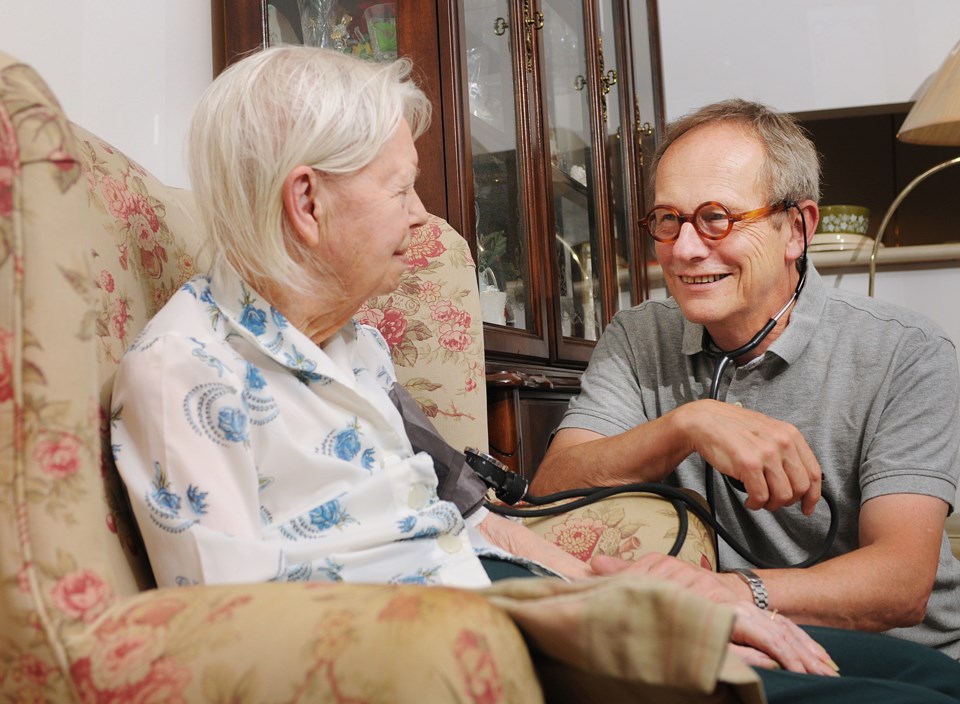“Doctor, I can’t wake my sister. I am very worried,” said the elderly woman. She had made a weekend call to Dr. John Sloan, and he was at the sisters’ home in less than 10 minutes.
Most doctors would have immediately sent this patient to hospital, Sloan said, but mindful of the times she had told him she never wanted to go back there, he checked that her blood pressure and respiration were normal and counselled the worried sister to postpone any ambulance call.
Despite the patient’s unresponsive state, which he suspected had been caused by a stroke, Sloan respected his patient’s wishes (and his own clinical judgment that a hospital stay would not be helpful) and kept her at home. When he checked back the next morning, his patient had awakened and was “sitting up eating cereal.”
“I am pro-hospital, when a hospital stay is appropriate,” Sloan emphasized in an interview later. “If I had a broken arm or a young or middle-aged family member was ill, I would want to be at the hospital. What I worry about is the way that test and treatment protocols developed for younger patients can have unintended impacts on my patients, the fragile elderly.” (The “fragile elderly” are patients who suffer from multiple pathologies and depend on others for the activities of daily living.)
In an age in which house calls are unusual and hospital is often the first option when things go wrong (entailing lots of expensive tests and a cascade of new prescriptions Sloan and his colleagues are taking a different tack.
Sloan, the Vancouver doctor who was introduced to Courier readers in a recent story, didn’t set out to be a medical maverick.
In fact, he said he “fell sideways” into working with the fragile elderly in the 1970s, when, as a young GP, he was asked to provide care for residents at a couple of local rest homes.
He quickly realized that his medical school training had not given him the background he needed to be useful to the patients he met there.
The fragile elderly, he discovered, differ sharply from the rest of the population in many ways, including how they respond to medication and in what they want from medical professionals. To properly treat this cohort of patients, Sloan said a physician needs to employ an approach that requires more personal contact and respect than high tech tests, and lots of house calls that allow the attentive listening to patients than is often impossible in a busy office.
Sloan’s colleague Jay Slater (the medical director of Vancouver Coastal Health’s Geriatric Community Programs, which includes the Home Vive program in which Sloan currently works part time) calls this approach “high touch, low tech.”
Home Vive doctors also try to reduce the phenomenon of “polypharmacy,” which often sees fragile elderly patients prescribed a dangerous number of medications, with all the unpredictable synergies and side effects this entails. Sloan describes this approach in his 2009 book A Bitter Pill.
“We see patients taking dozens of pills a day,” Sloan said. “It has to be done slowly and carefully, and only with the patient’s informed consent, but over time I am disappointed if I can’t get rid of half the drugs they are taking.”
Johanna Trimble, a patient/family representative with several local patient groups, supports Sloan’s approach.
“Our family discovered a serious drug interaction when my mother-in-law was prescribed new drugs. From someone who had been hallucinating and delusional, and could have died, she returned to normal when the drugs were stopped,” she told the Courier.
Tom Sandborn welcomes feedback and story tips at tos65@telus.net.



